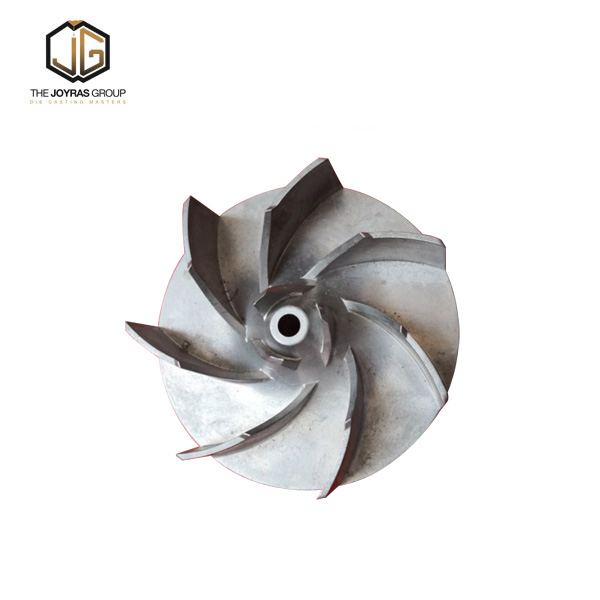
What are the benefits of using Aluminium Alloy in office equipment parts?
Aluminium Alloy is a highly desired material for office equipment part manufacturing for several reasons. Firstly, it is lightweight which makes it easy to move around for the user. Secondly, it is durable which means it can withstand heavy weight or impact without damage. Thirdly, it can withstand a high level of temperature and humidity, making it suitable for use in any office environment.
Do Aluminium Alloy office equipment parts pose any safety concerns?
When it comes to safety concerns, Aluminium Alloy office equipment parts are generally considered safe. However, there have been some concerns raised about the potential health risks of prolonged exposure to aluminium. Some studies suggest that excessive exposure to aluminium may increase the risk of certain health conditions such as Alzheimer's disease and breast cancer. However, these studies are inconclusive and further research is needed to determine the extent of the risks associated with the use of aluminium alloys in office equipment parts.
Can Aluminium Alloy office equipment parts be recycled?
Yes, one of the main advantages of using aluminium alloys in office equipment parts is that it is easily recyclable and can be reused without losing its natural properties. This makes it an environmentally friendly option for manufacturers and users.
What other materials are commonly used for office equipment parts?
Aside from Aluminium Alloy, other common materials used for office equipment parts include steel, plastic, and wood. Steel is known for its strength and durability, plastic is lightweight, cheap and easy to manufacture, while wood is a natural material that gives an aesthetic appeal to the furniture.
In conclusion, Aluminium Alloy office equipment parts are a popular and effective material for office equipment manufacturers. Its lightness, durability and eco-friendliness makes it a sought after option. While there are potential health risks associated with the material, more research is needed, and its recyclability helps to promote its environmentally safe usage.Joyras Group Co., Ltd. is a leading provider of high-quality Aluminium Alloy office equipment parts. For any enquiry, please contact us at sales@joyras.com. Visit our website at https://www.joyras.com.
Scientific Research References:
1. Yokel, R.A. (2000). "Aluminum in Human Health" Environmental Health Perspectives 108 (suppl. 2): 443–444.
2. Drago, Denise; Mostile, Giovanni; Raciti, Loredana; et al. (2017). "Aluminum and Fish: Contamination, Toxicity, and Impact on Food Quality. A Review" Environmental Monitoring and Assessment 189 (12): 616.
3. Rahman, Khondaker M.; Al-Rashid, Harunur; Sultana, Papia; et al. (2018). "Aluminum-Induced Pro-Oxidant Effect in Rat's Hippocampus: Reversal by Magnesium and Curcumin Attenuates the Aluminum-Induced Alzheimer's Disease Like Neurotoxicity" Behavioral Sciences 8 (3): 28.
4. Caraci, Filippo; Copani, Agata; Nicoletti, Ferdinando; Drago, Filippo (2019). "Metabolic Approaches to the Treatment of Alzheimer's Disease: A Future Perspective" International Journal of Molecular Sciences 20 (13): 3191.
5. Lee, Jong-Sik; Sim, Chang-Sung; Kim, Da-Hye; et al. (2017). "Aluminum-Induced Endoplasmic Reticulum Stress and Mitochondrial Dysfunction Lead to Apoptosis in PC12 Cells" Neurological Research 39 (5): 426–435.
6. Bozzetti, Federica; Dellarovere, Filippo; Migliore, Luciana; et al. (2015). "In Vitro Effects of Aluminum on DNA Damage and DNA Repair" Toxicology Mechanisms and Methods 25 (5): 334–341.
7. Zhang, Zhongshan; Wang, Cuiping; Li, Wei; et al. (2015). "Aluminum-Treated PC12 Cells as a Model of Alzheimer's Disease with Elevation of Tau Protein Levels" In Vitro Cellular & Developmental Biology - Animal 51 (10): 1031–1036.
8. Xie, Jingru; Bian, Jianchao; Chen, Hongmei; et al. (2011). "Potential Involvement of Endoplasmic Reticulum Stress Response in Aerial Part of Plants Exposed to Nano-Al2O3" Biology of the Cell 103 (7): 289–303.
9. Destefani, Aline C.; Brocardo, Lucila S.; Paim, Mariana; et al. (2014). "Prenatal Exposure to Aluminum Affects the Brain Tissue of Mice: a Histological, Immunohistochemical and Quantitative Study" Anais da Academia Brasileira de Ciências 86 (4): 1955–1963.
10. Yin, Xi-Yuan; He, Wei; Han, Jian-Bo; et al. (2018). "Combination of Environmental Risk Factors in Patients with Alzheimer's Disease" Chinese Medical Journal 131 (2): 183–188.